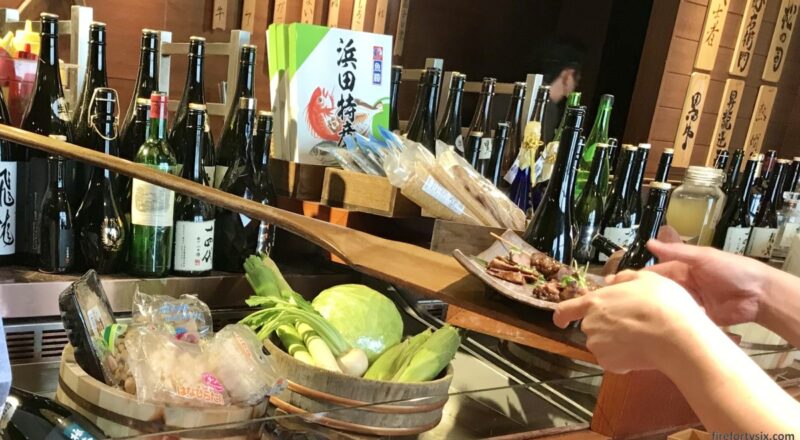Sometimes, dining out is not just about enjoying good food, it’s also about experiencing unique entertainment. This is especially true for places that focus on specific types of cuisine.
For example, when sitting at the counter in a Japanese teppanyaki restaurant, you’d expect to see the chef precisely slicing up beef, skillfully cooking the meat and then elegantly plating it right in front of you.
Likewise at a small sushi-ya, the deliberate yet fluid motions of a veteran sushi shokunin contribute no small part to the overall enjoyment of the meal.
While I’ve heard of robatayakis before, I’ve never actually been to one. Which is somewhat surprising, because I’ve visited almost every type of Japanese restaurant after more than two dozen work trips to Tokyo.
In my mind, I pictured a big open binchotan-fueled grill manned by boisterous cooks, all of them wielding long wooden paddles used to deliver freshly cooked dishes hot off the fire.
It would be noisy, it would be smokey and it would be a whole lot of fun.
My expectations were high as we approached the entrance of Akanoya Robatayaki, where an impressively large chunk of wood with its name carved out served as an imposing signboard.
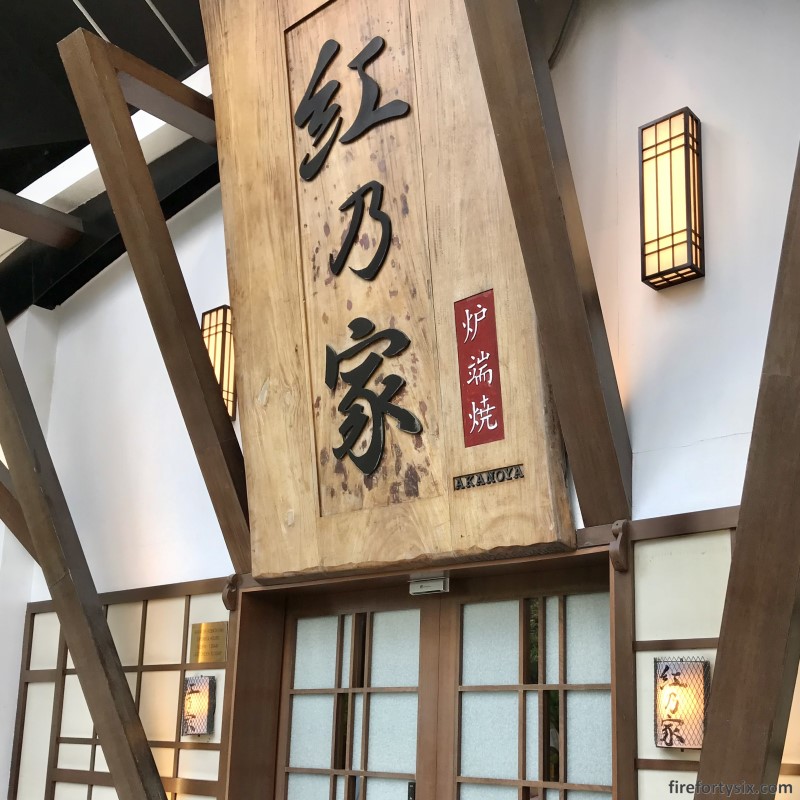
We had requested for counter seats when we made our reservation, and I was happy when they seated us right in front of the grill.
However, one small disappointment crept in when I noticed that the cooking area was out of visual range. It was blocked by a moat of fresh produce and a wall of sake bottles, many of them being large 1.8 litre isshobins of Juyondai (十四代).
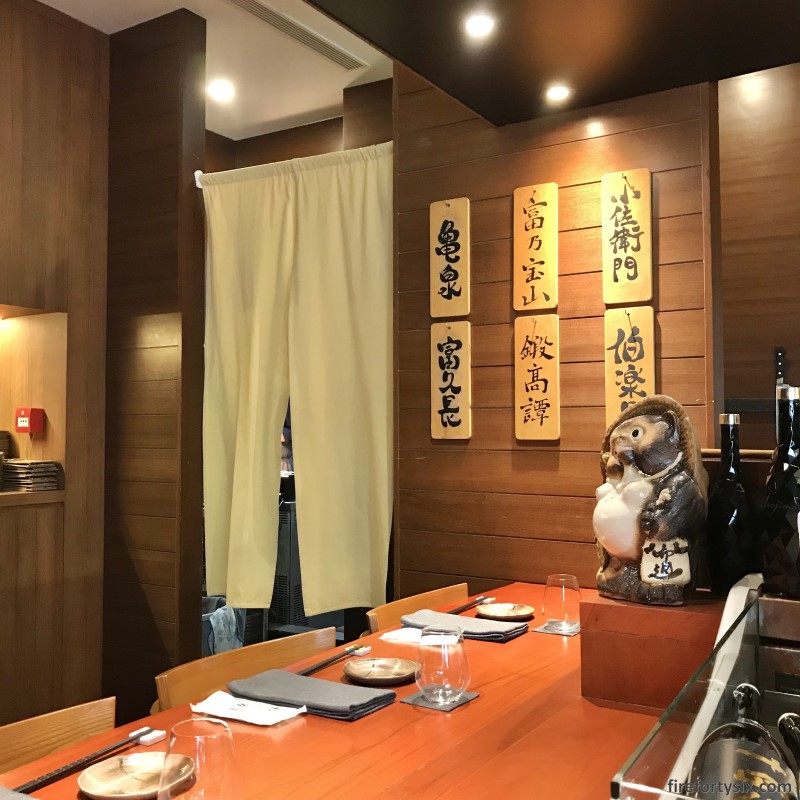
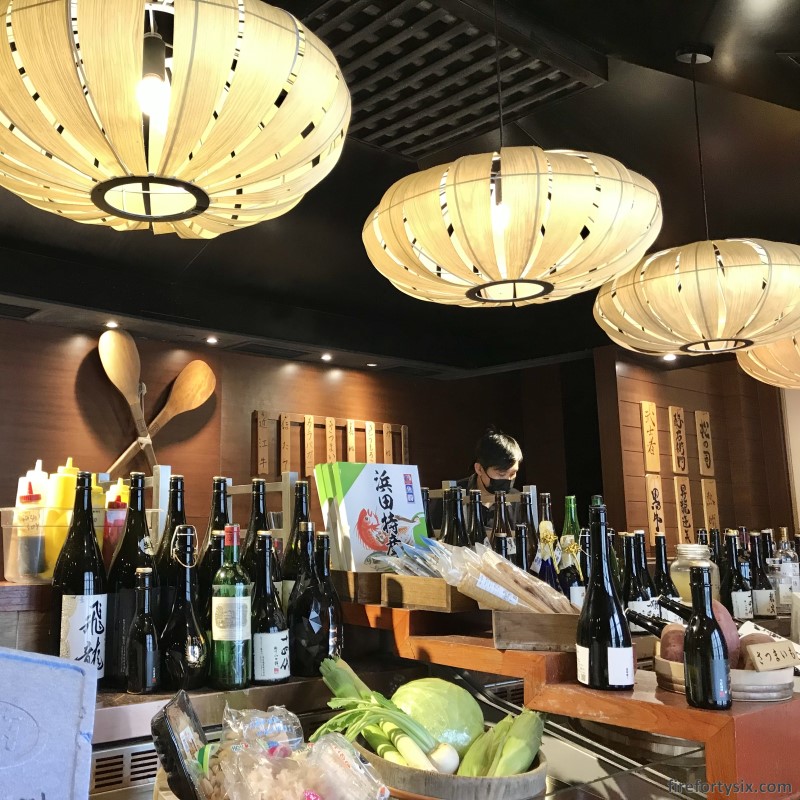
Which, in itself, was quite amazing because one, Juyondais are extremely difficult to source, and two, their prices are exorbitantly high.
“How high can they be?” you might ask.
Well, make sure you’re seated comfortably first, and then click here for an example. If that doesn’t impress you, then take a look at another bottle. Bear in mind that those are retail prices, and the same bottle in a restaurant can easily cost 2-3x more.
I couldn’t help but wonder who would actually order these bottles to drink, even as I continued to admire the contents of their sake/wine fridge.

Given the high price point of their alcohol, I quickly gave up on the idea of day drinking and switched my attention to the menu.
Both their normal lunch menu and the Restaurant Week menu were priced at S$48++, with additional top-ups depending on the choice of mains. However, the Restaurant Week menu included an extra dezato, just to sweeten the deal.

Between the four choices of meat: chicken, pork, seafood (+S$15) and beef (+S$25), we chose the chicken and the beef. I decided to pay up for the wagyu because I’ve not come across Satsuma beef before. Kobe, Matsusaka and Ohmi yes, but Satsuma wagyu was new to me.
So I fired up Google ChatGPT and this was what it said:
Satsuma Wagyu is a type of premium beef that is raised in the Kagoshima prefecture of Japan. It is considered to be one of the finest and most sought-after types of beef in the world. Satsuma Wagyu is a specific strain of the Japanese Black cattle breed, which is known for its high levels of marbling and tenderness.
The name "Satsuma" comes from the former Satsuma domain, which is now known as Kagoshima prefecture. The cattle are raised in a specific way, with strict guidelines and regulations that must be followed to ensure the highest quality meat possible. This includes a carefully controlled diet, regular exercise, and individualized care for each animal.
Satsuma Wagyu is highly prized for its rich, buttery flavor and melt-in-your-mouth texture. It is often compared to other types of premium beef such as Kobe beef, but many people consider it to be even better in terms of taste and texture. Because of its rarity and high demand, Satsuma Wagyu can be quite expensive and is typically only available at select restaurants and specialty food markets.Nice.
We had arrived just as they were opening their doors for lunch, and by the time we ordered, the counter seats were all fully taken. Most were couples like us, but there was a group of four that appeared to be from the same family.
Our appetiser course was served fairly quickly. It comprised a mushroom miso soup served in a square masu cup, a small otoshi of hotaru ika and an ikura-topped chawanmushi.
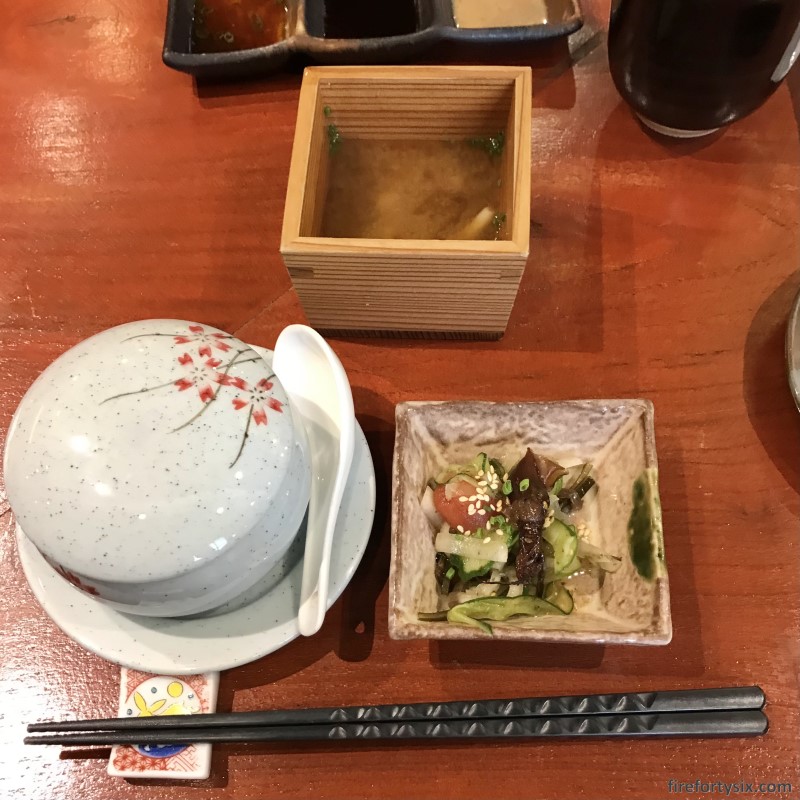
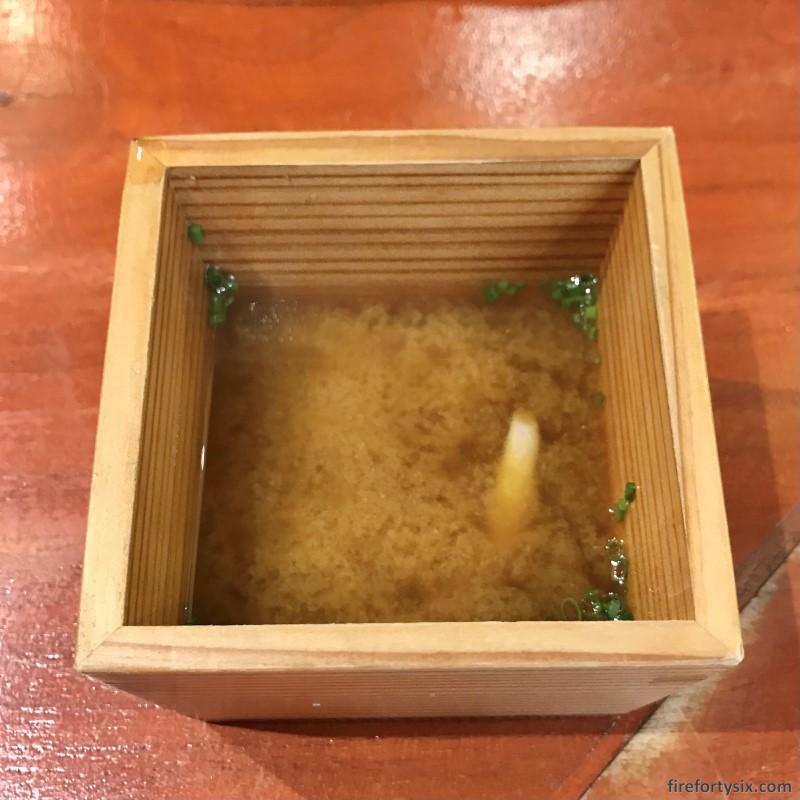

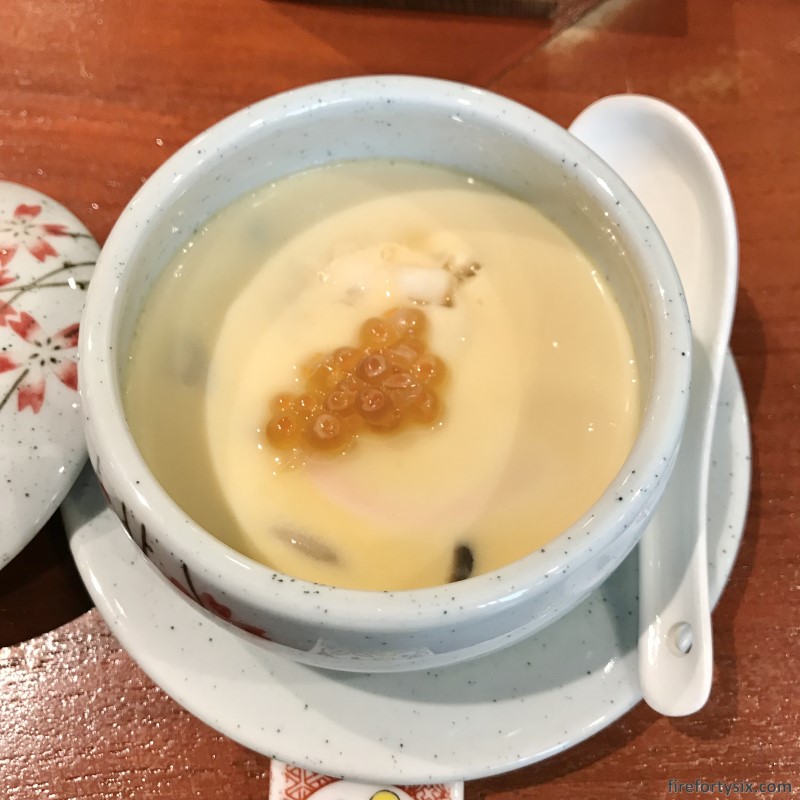
The miso soup was thick and rich, just how I like it, but the masu cup was quite awkward to drink from. I ended up taking careful sips from the corner, making sure to not let any liquid dribble down my chin.
I didn’t realise it was hotaru ika season again, and was pleasantly surprised to see it served in a refreshingly tart cucumber and tomato salad. It would have been even better if they served more than one squid, but even that one small piece was bursting with flavour.
When I opened the lid of the chawanmushi cup, the first thing I noticed was the ikura topping. Which immediately upgraded it from your normal run-of-the-mill version found in most Japanese restaurants.
Then, as I dug deeper, I found a chunky piece of what initially looked like high-grade crabstick. Only after taking a bite did I realise that it was actually lobster. The Wife must have had the same realisation, as she brought her spoon up to her eyes.
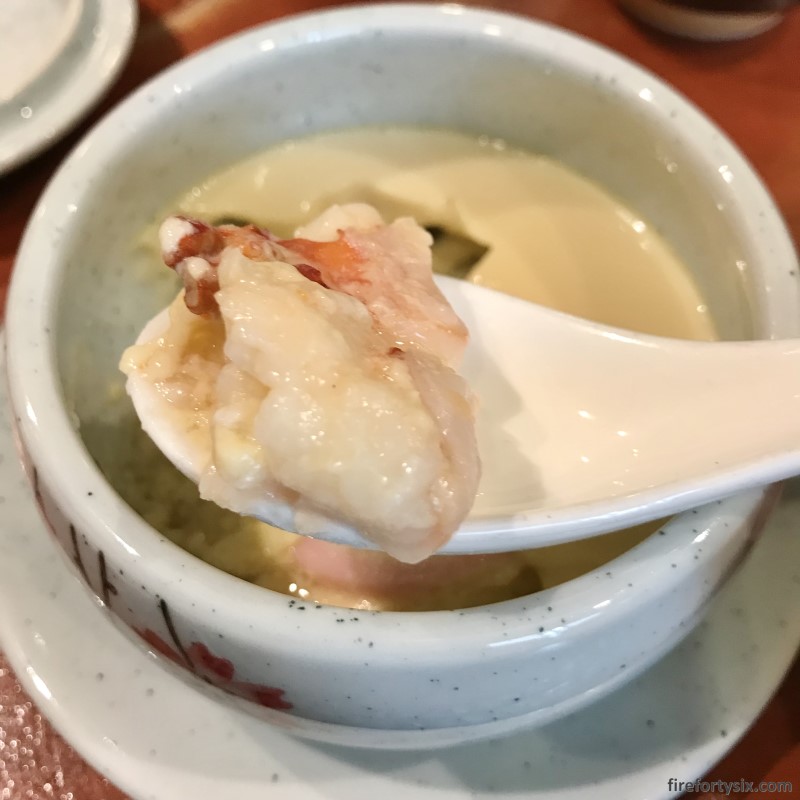
So far, so good.
The grilled dishes then came in quick succession. First to arrive was a plate of grilled broccolini and mushrooms, followed by skewers of chicken tsukune, thigh and wing and then the wagyu rump, round and tongue.
Only the chicken and beef were served by the chef on a long wooden paddle. While he did hold it up a while longer so that we could take pictures, the entire process seemed very clinical and lacked any sense of excitement or ceremony.
To be fair, I didn’t know exactly what is supposed to happen in a typical robatayaki, but I expected it to be more exuberant.
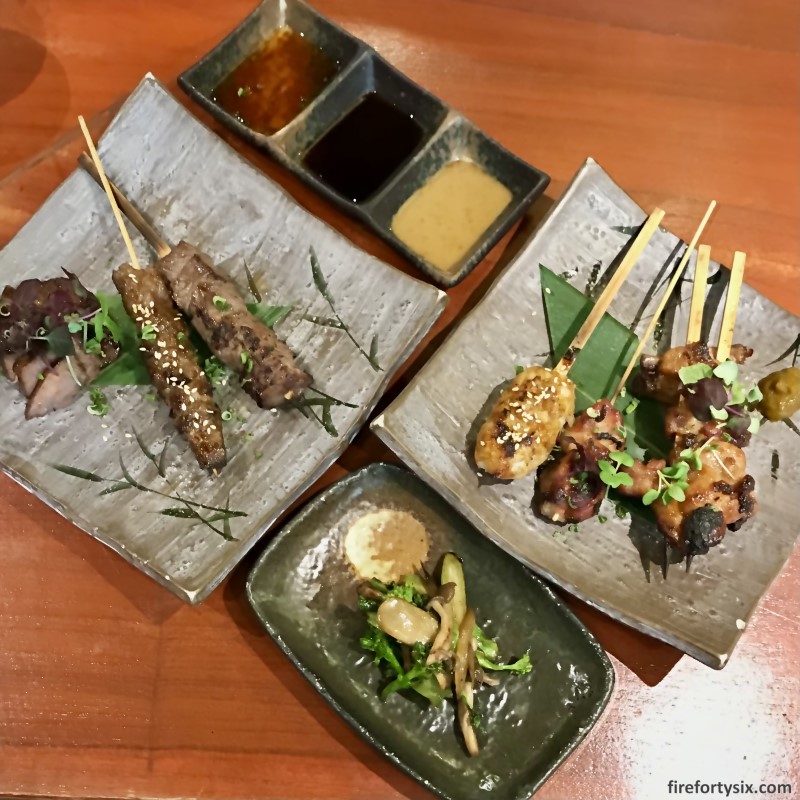

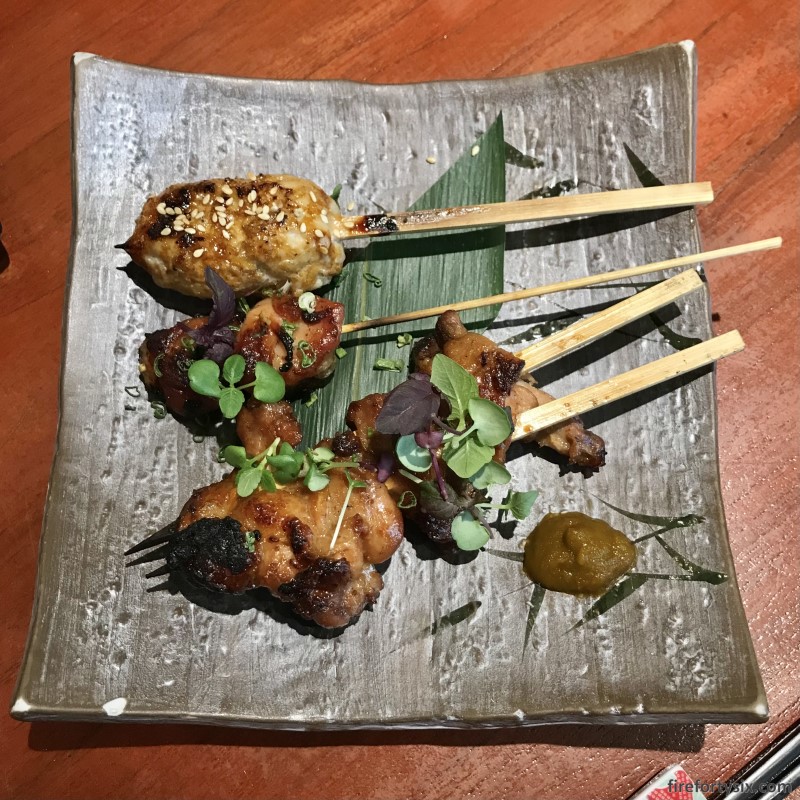
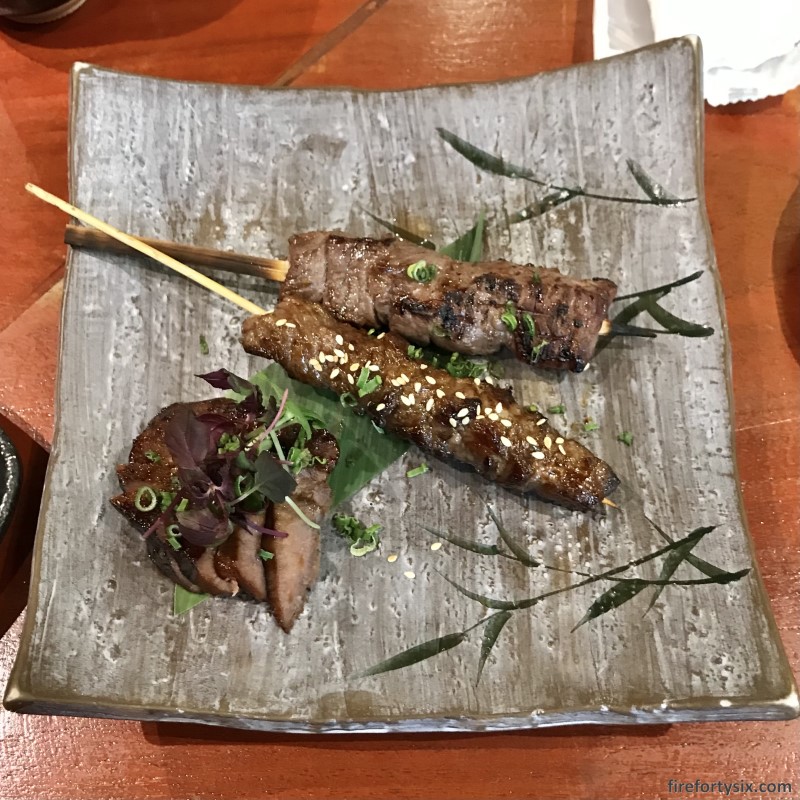
The food itself was quite nice, especially the charred broccolini, which I imagine is what you get when you cross-breed broccoli with kailan. The chicken tsukune was excellent, with crunchy bits of cartilage mixed in with the moist and juicy meat.
But the Satsuma wagyu was a bit of a letdown, and didn’t taste as fantastic as ChatGPT made it out to be. The sliced tongue didn’t have the characteristic chewy bite of gyutan, probably because it was cut too thinly. While the two wagyu skewers were seasoned well, they didn’t taste as good as the Kobe or Ohmi beef that we’ve had before.
Or perhaps cooking it robatayaki-style doesn’t do justice to such premium beef. I finished the plate thinking that I should have chosen the pork instead, and saved on the S$25 supplemental charge.
As the grilled items were served, our waitress presented a traditional claypot with cooked rice in front of us. She then proceeded to scoop out individual bowls for us, and topped them with some furikake.
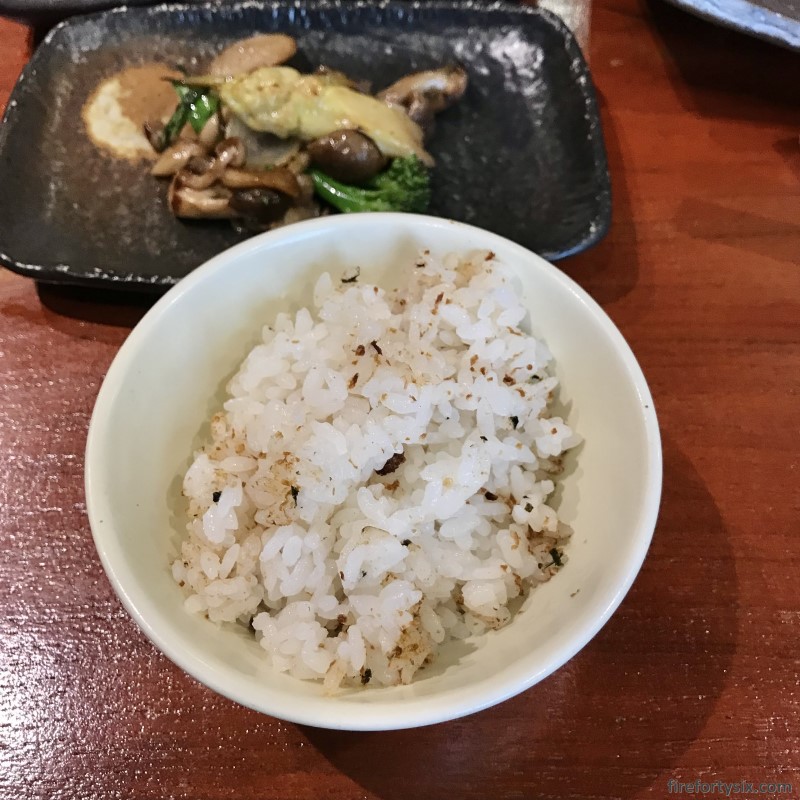
It was a nice accompaniment to the heavily-flavoured grilled meats, although it could have been nicer if the rice was cooked with additional ingredients like gingko or pumpkin.
The ambience throughout the lunch was quiet, and even though all the counter seats were taken, everyone seemed to be speaking in hushed tones, including us. I thought that the chefs and service staff could have made things a bit more lively.
Our last course, a dessert of blowtorched pineapple and butter cake, was surprisingly good. The smokiness carried through all the individual components and made for an interesting ending to the meal.
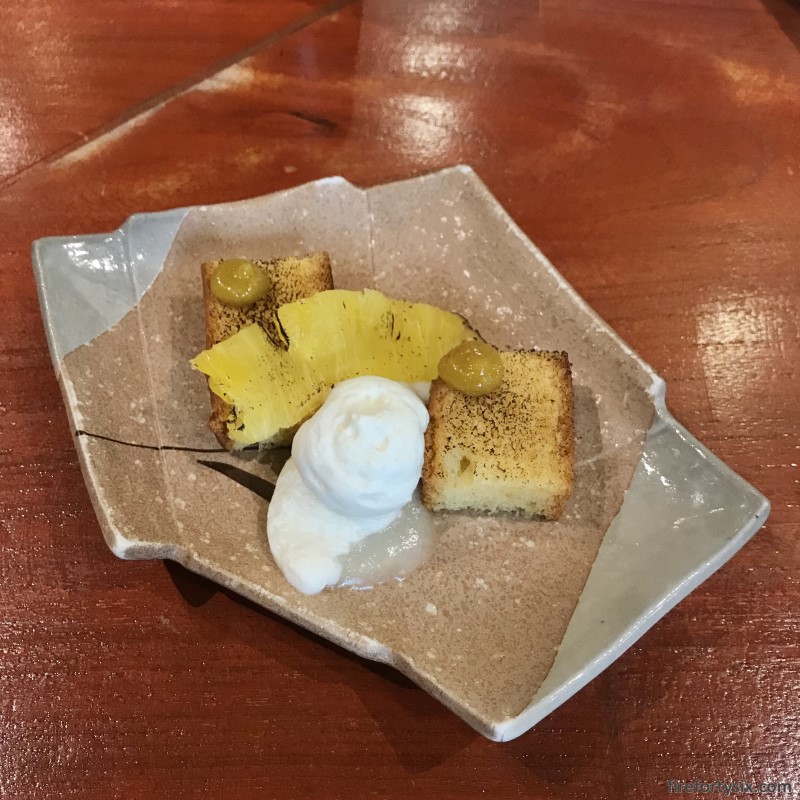
However, I felt that it was, again, a wasted opportunity.
The chefs could have introduced some flair by put the finishing touches at the open grill. Maybe throw up a fireball or two, and then ship the final product across using the long wooden paddle. Instead, it was quietly delivered by our waitress from the kitchen to our table.
Perhaps it was simply a mismatch in expectations, but I did feel a little bit let down by the lunch.
The food itself was nice, the service was good and the pricing was reasonable for what we had. What I thought it lacked was an element of fun, and a spot of showmanship.
I am still curious as to what a robatayaki in Japan is actually like though, and will try and visit one the next time we fly there. But in the meantime, when cravings for Japanese food strike, we’ll probably stick to our favourite izakaya in Singapore.
